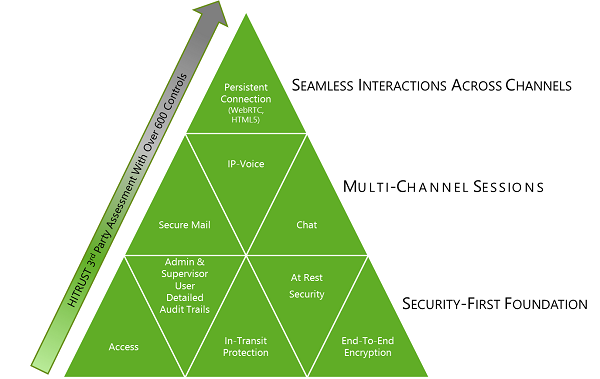Approximately 70% of calls into a contact center are now made from a mobile, and in most cases, smart device. This enables enterprises to embed greater security controls into customer interaction applications. Unfortunately, many enterprises are still lacking in this area, and callers spend 30 seconds answering security questions when they reach an agent, only to repeat these answers when transferred to another agent.
Continued data breaches along with greater compliance and regulatory liabilities have motivated most enterprises to secure their transactions, but there is a lag on securing all their interactions. Consumers expect their interactions to any enterprise (bank, healthcare provider, pharmacy…) to be consistent across all channels and secure, regardless if they complete a transaction or not.
One area that is particularly problematic is outbound notifications and calling. Most notifications are done via SMS text message; this is not secure and can and does fall into the hands of bad actors on a regular basis (see my related
post on UC security strategy). Robocalling is another area that is problematic, so when my credit card company calls me to tell me that my card has been compromised, how do I know it is them?
Highly secure interactions involve multifactor authentication, a zero-trust security framework and network, unique encryption of every session, secure interaction application, watermarks, and the ability to detect anomalies. For more details, read my post, “
Advancing the State of UC Security.”
In a perfect world, the credit card company would notify me on my mobile device and let me know a call is coming. When the call arrives, I would see a branded caller ID and a message suggesting I log in to the credit card company’s mobile app and use the bio mechanisms in my smart device (face ID, fingerprint) to verify myself quickly and easily. This way the credit card company knows it’s me, and I know it’s them.
Journey.ai, led by Brett Shockley, is doing this and here is an
example.
Another company in this space is
Revation Systems, which has enabled 80 million online banking customers to chat with their banks using no additional authentication. Revation is utilizing real-time user credentials and customer experience information through its
LinkLive Banking app to authenticate chat today and voice in an upcoming release. Revation is
HITRUST-certified and has built security into its platform from the ground up — it’s not bolted on. In the latest version of LinkLive, an enterprise can insert a small amount of HTML code into the head element of an HTML5/WebRTC application. LinkLive then provides secure and encrypted communications as it passes the digital transaction to a human interaction.
At
Enterprise Connect 2020, taking place March 30 to April 2 in Orlando, the Innovation Showcase will focus on UC and contact center security (
check out the EC20 program here, and watch for more information on the Innovation Showcase, coming soon). Securing interactions is as important as securing transactions and a lot is going on in this space.
For more insights on UC security at Enterprise Connect 2020, join Sorell there! The Advance Rate is still available, and if you register using the code NOJITTER, you can save an additional $200.











